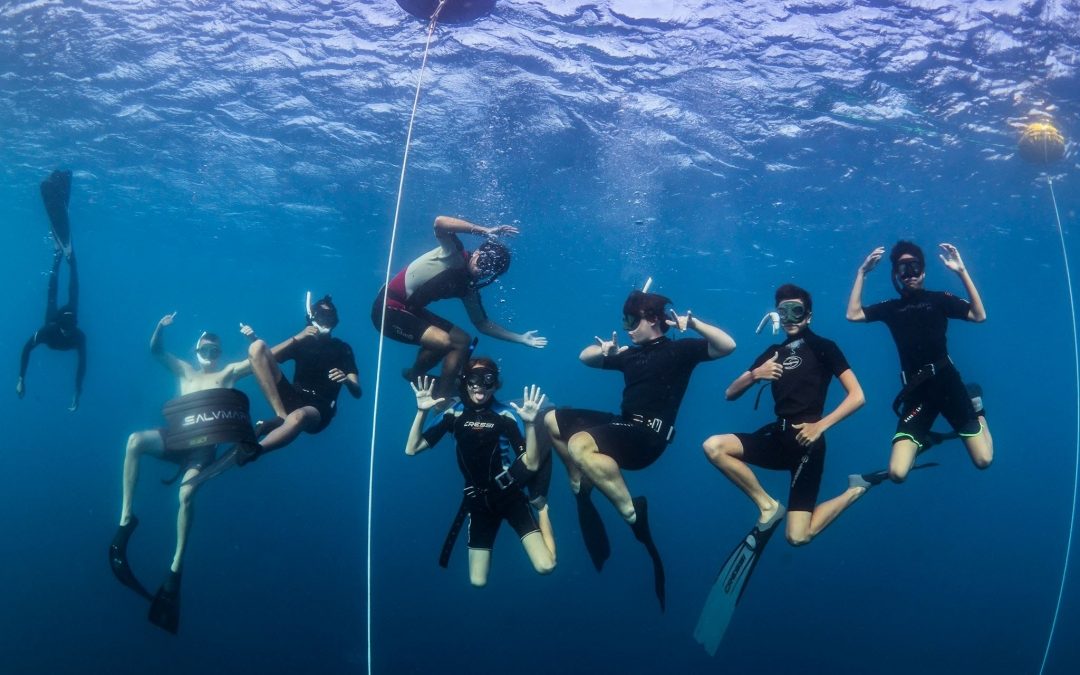Learning Reef Health Through LEAP
This semester, a group of Green School high school students initiated the “Reefs are Our Future” project. Motivated by an understanding of the importance of reef systems and local problems, students studying marine ecosystems decided to get hands-on by exploring reef restoration ideas and practical solutions. Coral Reefs are one of the most threatened eco-systems.
The project was conducted as part of Green School’s LEAP Academy program, a project-based learning experience where high school students can choose their own project and immerse themselves in this for up to 6 weeks. LEAP Academy gives students the opportunity to ‘go deep’ on subject matter knowledge while honing and applying 21st-century learning skills: collaboration techniques, communication skills, and effective strategies for time management. More importantly, this 6-week journey not only results in more knowledgeable students, but they actually contribute to building something – real solutions to a problem.
Teamwork is an essential part of this project-based learning. The Leap 3.0 students (the name they gave themselves as the third generation of Leap Academy), headed to Beji Guwang Canyon for team building as well as the mindful site of Gunung Kawi to learn about its history. It was an important start to get to know each other, as they would work closely in the next 6 weeks.
Next came the deep-dive into research and planning. This can be a testing time, but teachers Noan Fesnoux, Mauricio Camacho, and Patrick O’grady (senior student) were always ready to guide them step by step towards accomplishing their goals.
It is really amazing to see how well they have taken ownership of this project. Even yesterday we printed out flashcards to see how healthy reefs are. They have learned all the bio-indicators. They are looking at ways to raise funds for their free-diving course. They are feeling fulfilled and learning as they go.
Mauricio Camacho, Leap Academy Teacher
Connection and collaboration are two words that are heard regularly in team LEAP. Students learn about the power of collaboration, and in a joined-up world, knowing how to develop a mutually beneficial partnership with other organizations is a great skill to acquire. The Reefs are Our Future project saw students connecting, calling and dealing with real companies to influence them into supporting their project and, importantly, hosting their field trip and free-diving course (at a heavily discounted rate!)
This Reefs are Our Future project not only provides rich learning experiences for the young learners but is also a lot of fun. While diving and identifying a variety of fish and invertebrates as an indicator of the health or unhealthy ocean, they came across an octopus and were lucky enough to capture it on film. Take a look for yourself in this video.
(Video by Leap Academy team)
Time flies when you have fun – and so did the six weeks. Ultimately, the Leap 3.0 students designed and built artificial reef structures, new habitats for marine creatures in the North Bali ocean.
At the end of the project, the Reefs are Our Future team showcased their learning not by writing a report, but reflecting, sharing and demonstrating learning to our school community. The students showcased the culmination of their hard work and all they learned to the high school community from grade 9 to grade 12 and beyond. LEAP Academy also facilitated students to produce digital content such as blog stories, videos, podcasts, and photos so they can share their projects and the significance of ocean conservation across the globe.
Listen to their podcast:
In a nutshell, these were highlights of Leap 3.0 journey: they made connections with multiple major nature conservation organizations, raised money by running their own business in school, researched reefs and expanded our knowledge of environmental science, created an understanding of bio-indicators and keystone species, became PADI level 1 freediving certified and learned about biology in the process. As their learning legacy, they constructed their own artificial reefs and placed them in the ocean near Tianyar. We watch and wait, as nature now takes its course.
Through collaboration, creation and sharing real solutions for our beautiful oceans, this team leaves their legacy deep in the North Bali water.




